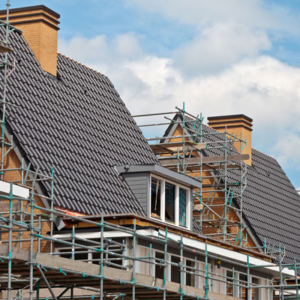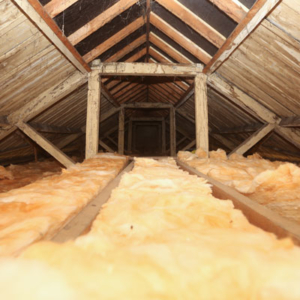Grenfell interim report: Now is the time for architects to take back control of fire safety in construction
 Featured in ArchitectsDatafile
Featured in ArchitectsDatafile
In the wake of the Grenfell tower tragedy, there has been a dramatic shift in attitudes towards the role of architects within construction. The avoidable disaster has forced the industry to take design quality more seriously, whilst also demonstrating how high-quality build specifications can save lives.
The official results of the post-Grenfell review, spearheaded by the Department for Communities and Local Government (DCLG), are still yet to be determined, however an Interim Report was recently released by Dame Judith Hackitt. Outlining the key lessons learned so far, as well providing initial recommendations, the report unsurprisingly found that current UK Building Regulations are not fit for purpose.
Working to ensure tragedies like Grenfell do not happen again, architects now have the opportunity to use the Interim Report findings to become industry leaders on all aspects of fire safety. This is an issue focused on care, protection and long-term build performance, working to not only educate others within the supply chain, but to also protect occupant lives. However, when faced with budget costs and complex build programmes, how can architects begin putting these key findings into practice?
Key lessons
A critical factor in the failure of Grenfell was the cost saving substitution of an FR grade aluminium composite material cladding, for an unrated grade with a polyethylene core, which has since proved highly combustible in Government tests. In addition, the synthetic insulation used on the building was made from polyisocyanurate, which has since proved combustible in Government tests.
Initial reports from the disaster also revealed that the insulation chosen for the £10m tower refit was acceptable for use on tall buildings, but only when combined with incombustible cement panels. Individually, both the cladding and insulation materials can prove problematic, but when used together, they were catastrophic.
Despite 95% of buildings screened and covered by the recent Government BS8414 testing program failing to meet current fire safety standards, the Interim Report has failed to recommend the immediate prohibition of combustible materials in high rise, multi-occupancy buildings. Given how the build materials at Grenfell acted as further ignition to the devastating fire, this is a surprising initial outcome, and one which likely only serves to create more confusion and risk across the industry.
However, the Interim Report does recommend that ‘the Government considers how the suite of Approved Documents could be structured and ordered to provide a more streamlined, holistic view – whilst still retaining the right level of relevant technical detail. With RIBA also pushing for a comprehensive reappraisal of Document B and related fire standards, the need for change is clear and key construction components such as cladding, insulation and fixing methods must be considered holistically as part of a robust fire safety build strategy to avoid future disasters.
Designers need to take responsibility for any non-standard build slip ups. This includes understanding how materials work together, as well as their influence on fire safety, attention to detail, environmental impact and workmanship. Informed specification decisions should be based on not just budget requirements or their performance in isolation, but on how components interact across the entire build and with each other.
A unified approach
In the past, architects have been able to ensure that specified materials were used as part of a unified design strategy. However, facing increasing industry pressure to cut costs, this isn’t the current reality, with performance specifications enabling alternative materials to be used – often selected by the developer, contractor or sub-contractors.
Along with the rise of complex ‘design build’ contracts architects are increasingly being left powerless within the construction supply chain – with no say or input on budget cuts or the substitution of cheaper alternative products.
This shift in build processes means that during construction there is no longer a single appointed professional who is responsible for ensuring that the specified materials perform when placed under pressure from potential risks. This can be seen in practice, with detailed analysis of public documents revealing a complex chain of contractors and sub-contractors during Grenfell’s refurbishment, which raises the question of who was ultimately responsible for fire safety during its construction.
The Interim Report recommends that professional and accreditation bodies should work together to provide a regulatory framework to ensure that those working on the design, construction, inspection and maintenance of complex and high-risk buildings are not only suitably qualified, but also understand the safety, risk and specification needs of individual buildings.
This is supported by recommendations from RIBA, which advises that architects should act as that single point of responsibility from project conception to completion, preventing key specification decisions (such as the use of fire-retardant cladding) from being transferred to contractors during the build process. It would also mean that the materials specified not only work together cohesively as part of a wider fire safety strategy, but that they are also correctly installed and maintained to regulatory standards.
For example, if a non-combustible insulation product cannot be applied uniformly across a façade, it is the architect’s responsibility to ensure the implementation of cavity barriers to stop, or at least slow fire spreading. Non-combustible insulation can also provide an element of building preservation during fires, offering an extra opportunity to protect its inhabitants.
Designing a safe future
Architects play a vital role in ensuring tragedies like Grenfell do not happen again, making fire safety a vital component in the early design stages. Whilst reviews and investigations are still ongoing, there is no doubt that fire safety regulations and standards will become more stringent following the release of the Interim Report and architects should expect to play a greater role within not just design, but also construction.
Designers now have the opportunity to become the voice of fire safety, educating developers and contractors on the importance of incorporating high quality specifications and fire protection measures into building design at an early stage. By putting just some of the Interim Report’s recommendations into practice, architects can not only create a more efficient and safer way forward for design and construction, but also protect lives in the long term.
By Duncan Voice, Store Manager, Insulation Superstore
Contact information
CMO Group PLC
Burrington Business Park
Burrington Way
Plymouth
Devon PL5 3LX


